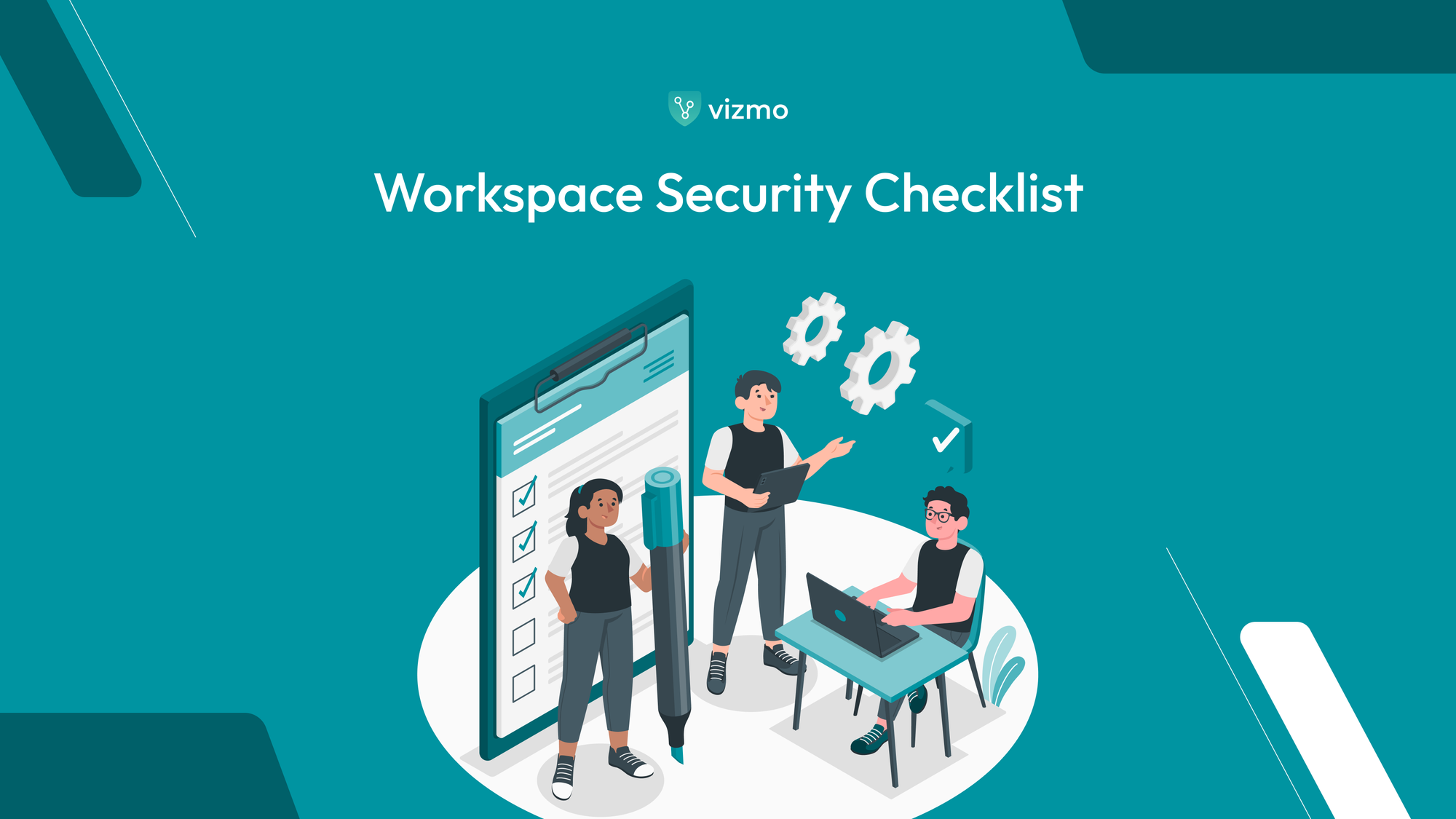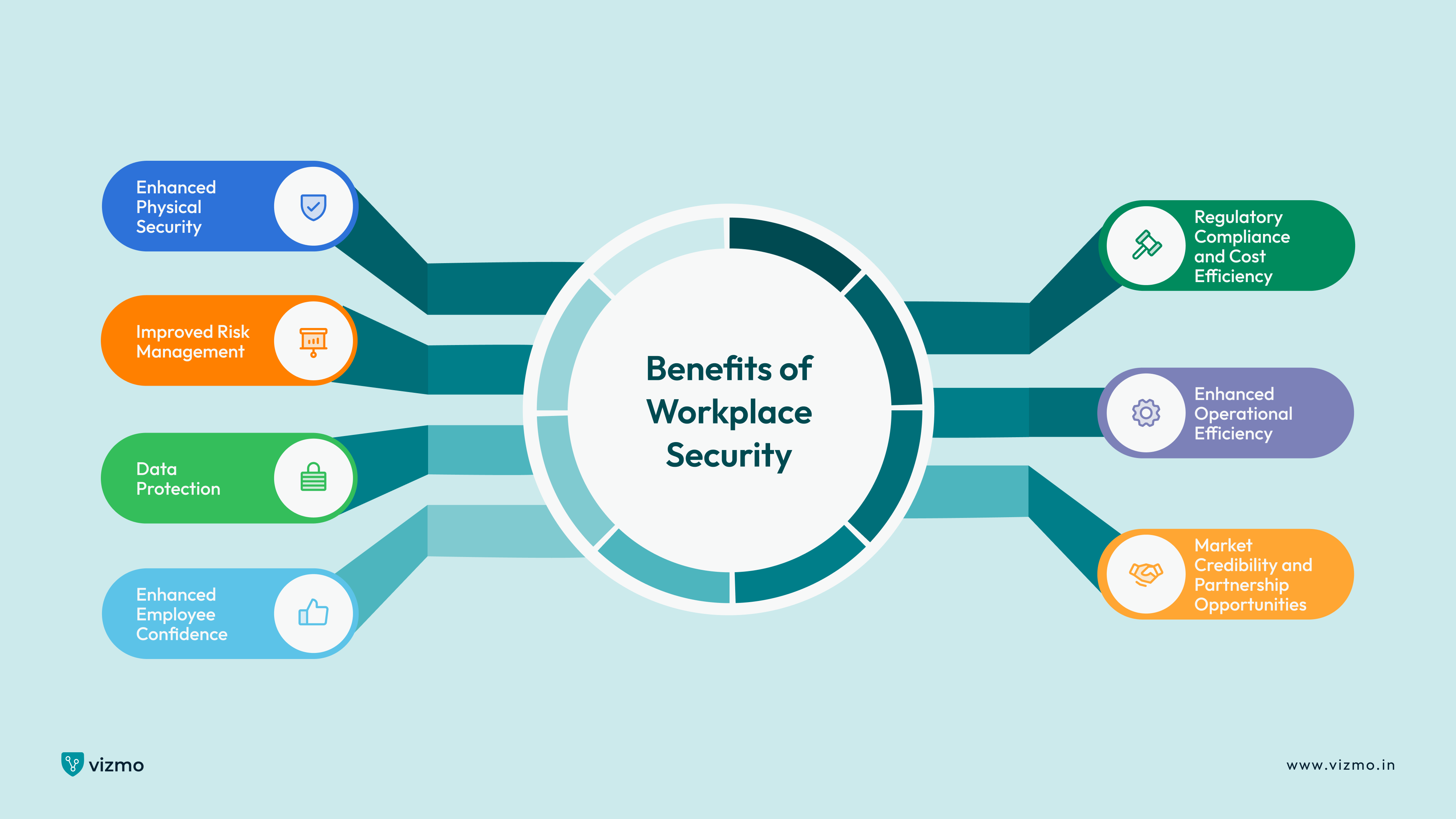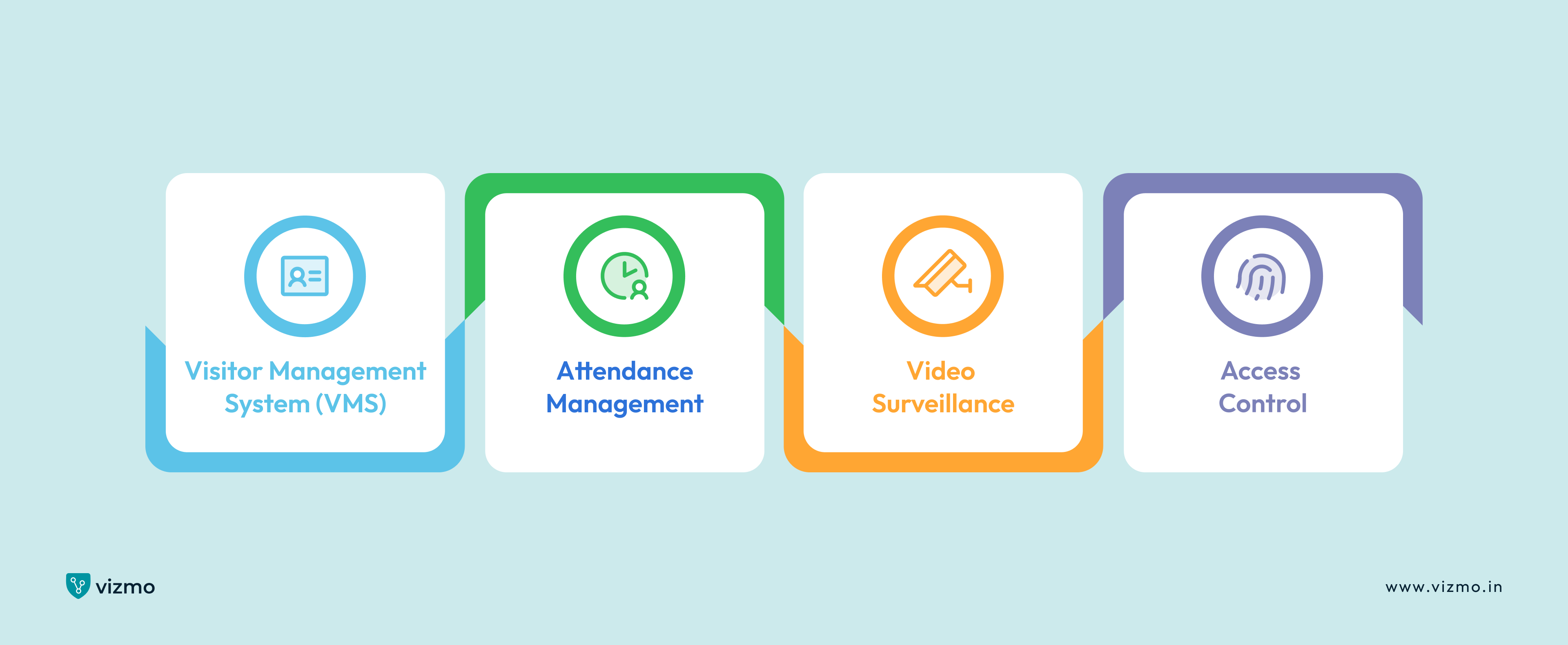Free Workplace Security Checklist Template

In a world where security threats can undo years of progress in an instant, being prepared against these challenges should not be considered optional – incorporating security practices should be essential. Regardless of whether you’re a small business or a major corporation needless to say having an effective workplace security checklist remains critical.
According to the 2022 Commercial Victimisation Survey, around 28% of business premises reported being victims of physical security-related crimes in the past year. The most common crimes were theft (15%), followed by burglary attempts (9%), vandalism (9%), and assaults or threats (7%). In 2024, a cyber security trends report noted that 60% of small businesses that couldn’t protect themselves from cyber attacks had to go out of business.
Protecting yourself from physical and cyber threats isn’t a one-time effort—it’s an ongoing practice. Implementing and following a comprehensive workplace security checklist will allow you to mitigate these risks effectively. This guide will delve into the common security challenges faced by businesses today and provide actionable steps to address them.
Benefits of Having a Workplace Security Checklist

Workplace security is the measures and strategies implemented to protect your assets, people and crucial information. It’s a means to protect the very cornerstone of your operations. Following a workplace security checklist entails recognizing and mitigating potential and invisible threats keeping in mind both your physical and digital up-front.
The continuous practice of following a workplace security checklist—reviewing and regularly making adjustments, enables you to stay ahead of evolving threats and ensures that your security systems remain effective at all times.
Benefits of adopting a systematic approach to security, such as following a workplace security checklist are:
1. Enhanced Physical Security
Implementing an effective security strategy comprehensively protects your building, equipment, and assets, ensuring they are shielded from potential threats. This approach not only safeguards you against theft, vandalism, and unauthorized access but also creates a secure environment that deters criminal activity and preserves the integrity of your physical resources.
2. Improved Risk Management
A consistent and disciplined approach to security involves identifying potential risks and implementing preventive measures to counteract them. By regularly reviewing and updating workplace security measures, businesses can stay ahead of emerging threats and make informed decisions to protect their assets, people and resources.
4. Data Protection
The FY24 IBM report shows the global average cost of a data breach rose 10% from the previous year, reaching $4.88 million in 2024. On the other hand, a study suggests that with 2,328 daily cyberattacks, about 800,000 each year, a hacker strikes every 39 seconds. Therefore, being prepared and implementing data protection measures helps organizations safeguard their sensitive data, brand reputation and prevent data breaches.
5. Enhanced Employee Confidence
According to the Society for Human Resource Management, one in seven employees report feeling unsafe at work. Meanwhile, another study by Cogent Business & Management, suggests that workplace security significantly boosts employee productivity. When employees feel safe in their work environment, they develop greater confidence and a more positive outlook towards their organization.
6. Regulatory Compliance and Cost Efficiency
A Ponemon report revealed that non-compliance with regulations costs businesses an average of $14.82 million, whereas adhering to regulatory requirements costs significantly less, approximately $5.47 million. This demonstrates that it is more cost-effective for companies to comply with regulations rather than face the higher expenses associated with non-compliance.
7. Enhanced Operational Efficiency
Ponemon Institute research indicates that organizations that regularly test their security measures develop significantly greater confidence in their overall security. This assurance enables them to focus more on key business priorities, knowing that their security infrastructure is strong. As a result, they can allocate more time and resources to growth, innovation, and other critical areas, rather than being worried about potential security vulnerabilities.
8. Market Credibility and Partnership Opportunities
Businesses that prioritize security are more likely to earn the trust of clients, partners, and customers, strengthening their reputation in the market. Gartner predicts that by 2025, 60% of businesses will primarily make partnership decisions analyzing the security strength of potential partners. This means that a company's ability to protect itself against threats will become a critical factor in forming business relationships and attracting good business partners.
Workplace Security Checklist by Vizmo

1. Preparing Workplace Security Checklist Essentials
Establish Core Objectives
Workplace security involves you to look at many aspects, so it's crucial to know exactly what you're looking at during the audit. Start by laying out a detailed plan that your assessment team can follow. This detailed plan will allow your assessment team to effectively prioritize tasks and keep on track. Include specific deadlines and a clear timeline to keep the audit organized and on schedule from the very beginning.
Choose your Assessment Team
Your next step would be to select an assessment team for the security audit. Select a team with the necessary expertise, whether it's an outside security expert or your employees who know your organization well and understand the operations and potential risks.
Select your Evaluation Method
Create a rating criteria before you begin with your audit. For instance, you can use a 1-5 scale. To effectively understand your rating system, start by reviewing the specific criteria that will be used to evaluate each area, ensuring everyone knows what each rating represents. Hold a training session where the team can discuss and clarify how to apply the rating system consistently, and create a reference guide for easy access during the audit.
Identify Stakeholders
Once your team is in place, identify key stakeholders who will support the security assessment. The stakeholder will help work your assessment team, providing them with essential information and reviews, during the physical security assessment. Additionally, they can also help prioritize the findings and assist in implementing any necessary changes or improvements identified during the audit.
Employee Awareness
Before beginning with the audit, inform your employees that a security assessment will take place. This communication ensures that employees feel informed and comfortable with the process. It also helps them understand its purpose, which reinforces the overall importance of workplace security. Additionally, take this opportunity to train employees on key security initiatives, so they are better prepared to contribute to maintaining a safe and secure work environment in your organization.
2. Conducting the Workplace Security Audit
Access Control System
It's crucial to carefully manage who is allowed to enter your building and to determine the specific areas or resources they can access based on their role or level of authorization. With the different types of access control systems in the market, assess your specific needs before going for an access control system of your liking.
For security and monitoring tasks, it's more efficient to implement digital solutions like a Visitor Management System to streamline the process, track visitor activity in real-time, and enhance security by ensuring that only authorized individuals gain access to your premises. Hence a solution which seamlessly integrates an access control system with your visitor management provides a competitive advantage.
Additionally, ensure that only authorized personnel have access to sensitive digital data and information, safeguarding both physical and digital assets of your organization. Lastly, verify that permission levels are up to date, removing access for former employees to maintain security.
Video Surveillance Systems and Alarms
Your security systems, including alarms and video surveillance, play a crucial role in preventing breaches, both during and outside business hours. Ensure that all your cameras and alarms are fully operational, covering all critical areas of your workplace. Consider adding more cameras where needed, such as in parking lots or less-visible areas. Additionally, set up automatic alerts to notify you of unusual activities in real-time.
Assess Environmental Safety
If your workplace is in a region prone to natural disasters, such as earthquakes or hurricanes, consider reinforcing the building's structure and having a disaster response plan in place. Check for proper drainage systems to prevent flooding and water damage. Ensure all windows and doors are functional and clear of clutter, regularly check them for any damage. Also, make sure emergency exits are clearly marked and free of obstacles to allow quick evacuation in situations of emergencies.
Evaluate Emergency Exits and Lockdown Procedures
Review your emergency exits and lockdown procedures as part of your audit. Ensure that all emergency exits are clear and free of obstructions, like boxes or clutter. Make sure to conduct regular training sessions and evacuation drills to ensure that everyone in your organization knows what to do in cases of emergencies.
These drills help familiarize employees with evacuation routes and lockdown procedures, ensuring they can act swiftly and confidently during a crisis. Additionally, develop clear lockdown protocols for various scenarios, such as active shooter situations or natural disasters, and ensure all employees are aware of these procedures.
Review Documentation and Procedures
Moving on to the last step, consider focusing on how documents and processes are managed in your organization. Do team members ensure sensitive documents are put away before clocking out? Are critical papers stored securely, or left vulnerable in unlocked storage? Even though documentation is often linked to digital security, it also plays a part in physical security. If possible, move towards digitizing documents. If not, enforce strict procedures for managing physical documents to minimize risks.
3. Analyze and Optimize Your Security Measures
Identify your Security Shortcomings
Remember we discussed following a rating system for your security assessment practices. Use the rating system to identify areas where your workplace security is lacking. These are the gaps that require immediate attention. Address these security weaknesses to get ahead in your workplace security posture. Consider seeking help or involving professionals and the right people to help you out.
Update Security Policies and Procedures
Security policies and procedures are the guidelines your team follows to maintain workplace safety. Regularly reviewing and revising your policies is essential to adapt to new threats and technologies. For instance, if your access control is a weak point, consider switching to a badge-less system and updating your procedures accordingly. Make sure to share the updated policies with everyone in the organization to keep them in the loop.
Implement Routine Employee Training
Training employees is one of the most effective ways to enhance workplace security, ensuring they can recognize and respond to potential threats. Hold regular training sessions on security practices, such as avoiding weak passwords, recognizing phishing scams, and not allowing unregistered visitors inside. When your employees understand the risks, they're more capable of avoiding them.
Develop a Security Improvement Plan
Keep looking for effective ways you can implement to improve your workplace security. This assessment will help you see where your security needs work. Based on your findings, draft a plan for improving security in the next few months or years. Set clear intentions and targets for your team to focus on.
Plan your Next Security Audit
Before wrapping up this assessment, schedule your assessment beforehand. Lastly, don't wait to simply forget about your next assessment—set the date for your next security review to stay ahead.
4. Tech-Strategies for Workplace Security
Implement a Visitor Management System
Use a visitor management system to keep track and logs of everyone who is visiting your workplace. A visitor management system allows you to simplify the check-in process with automated solutions such as digital registration and ensure safety of your workplace. Solutions like Engage can also help track and record your employees' check-in and check-out times for better workplace efficiency.
Train your Office Management Team
It's crucial to provide your office manager with comprehensive training on all aspects of workplace security. This training should cover everything from identifying potential security threats to managing access control and responding to emergencies.
Utilize Blocklists
Did you know that you can prevent certain people from entering your premises by using the blocklists feature of your visitor management system? You can block specific individuals who have previously violated or caused havoc in your organization and even receive alerts if someone on your blocklist attempts to enter the premises.
Automate Security Processes
Automating security processes is key to reducing human error and enhancing efficiency. By using automated systems, you can ensure that security protocols are consistently followed, without relying solely on manual oversight. For instance, you can automate access control, ensuring that only authorized individuals can enter specific areas.
Integrate your Security Tools
Integrating your security tools, such as video surveillance cameras, alarm systems, Visitor Management Systems (VMS), and attendance management systems, creates a unified and more effective security network. By connecting these systems, you can automate responses to security incidents. The integration of different tools and software allows for real-time monitoring and faster reaction times, ensuring that all aspects of your security are working together seamlessly to protect your workplace.
To get started with your first workplace security assessment, download this comprehensive workplace security checklist in PDF format and ensure your business is protected.
Final Thoughts
Taking proactive security measures, following a workplace security checklist and maintaining regular security assessments is crucial in protecting your organization from potential threats. The more you invest in preparing and securing your workplace, the better you’ll be able to prevent and respond to any security issues that arise whether it be physical or cyber oriented.
Additionally, every workplace is unique. Assess your specific security needs and consider consulting with security professionals to tailor a solution that fits your particular organization. By taking these steps, you ensure that your security practices are both effective and adaptable to future challenges.
Learn how Vizmo can help you with your special security needs. Book a demo with us to get started this instant.

